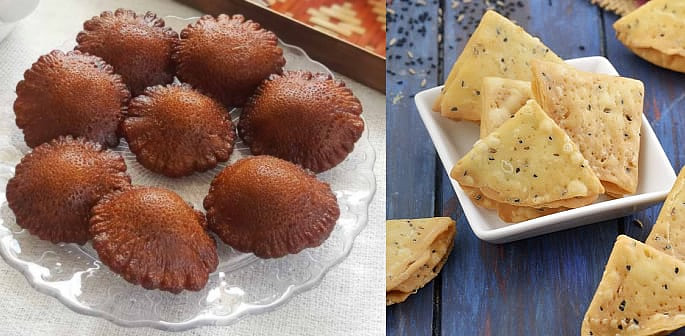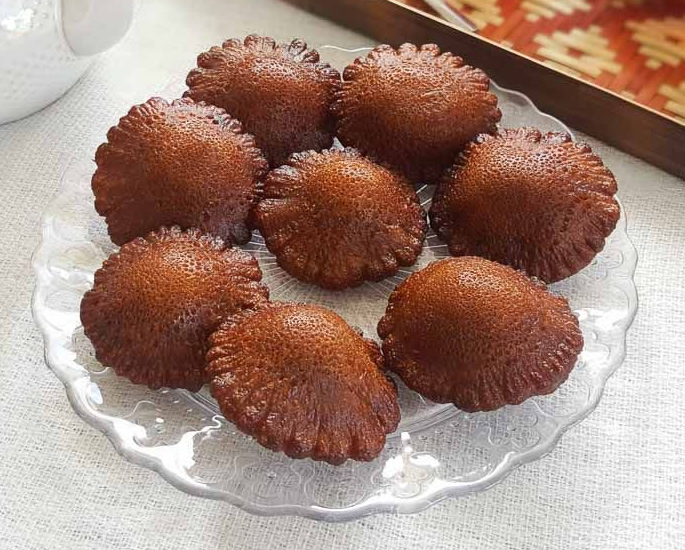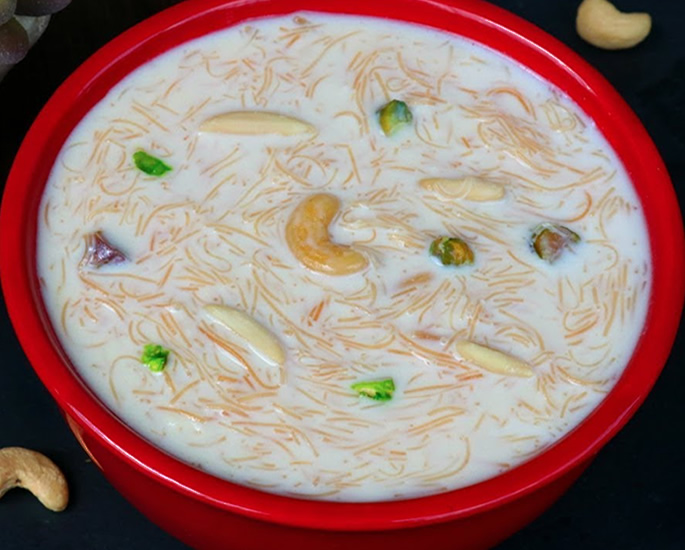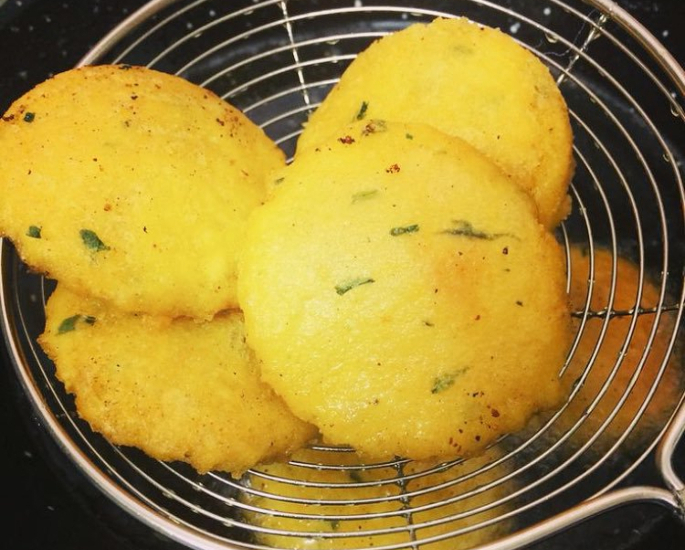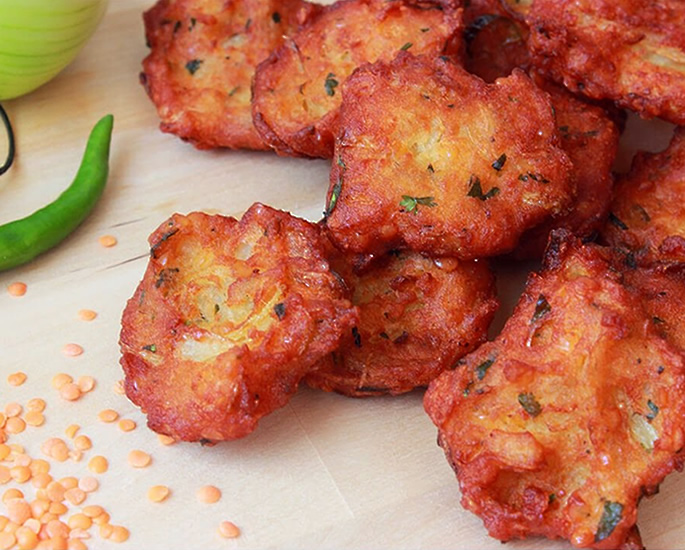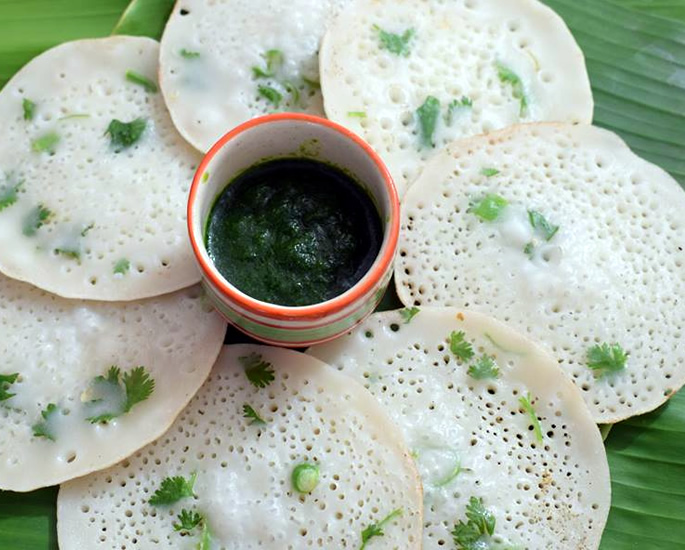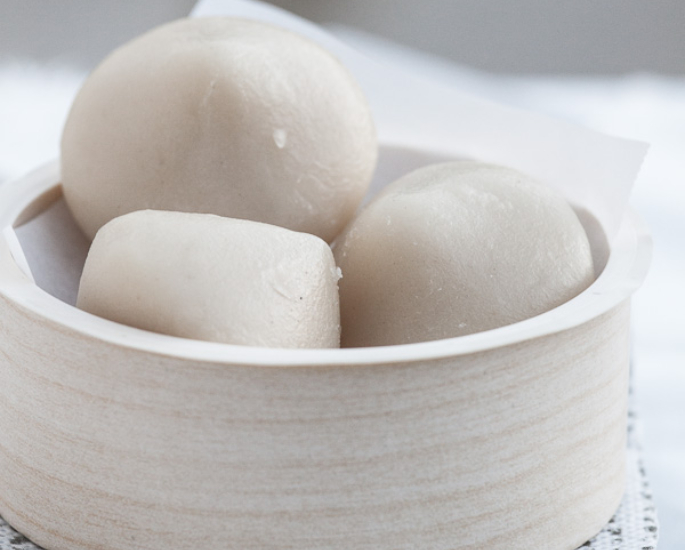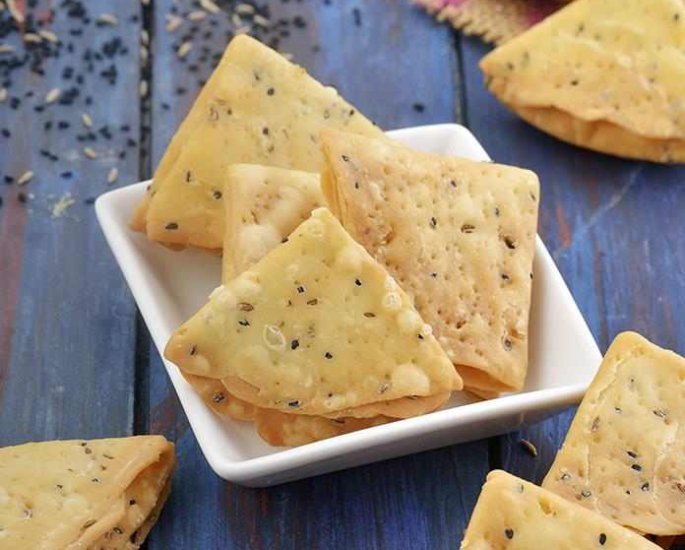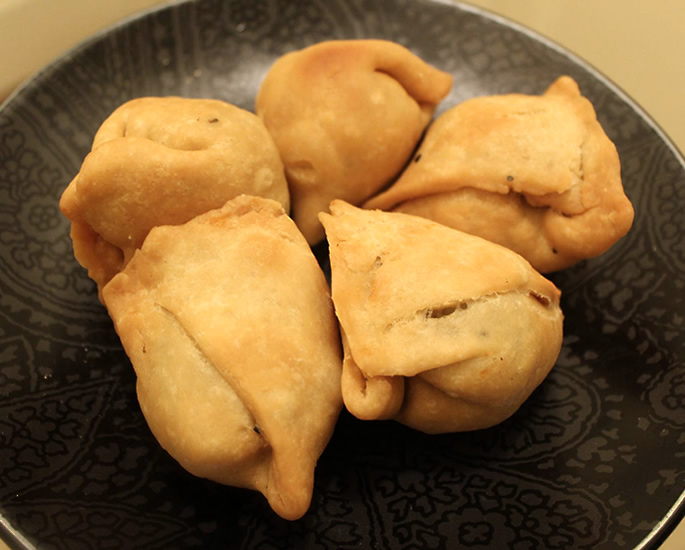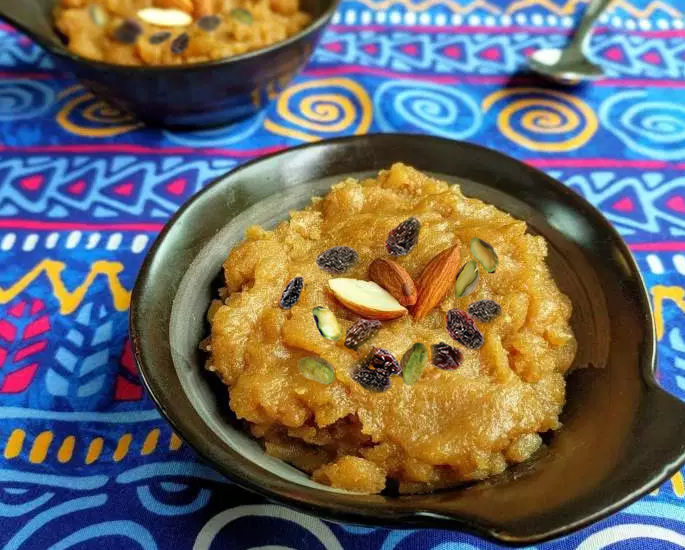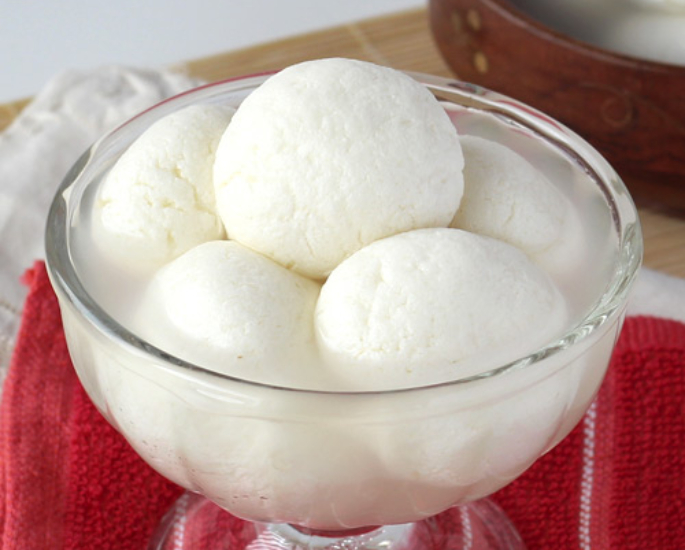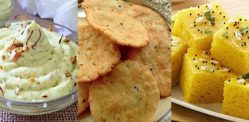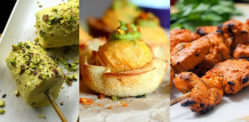The dessert is so tasty, a brawl broke out at a Bihari wedding when they ran out!
Bengal is just one of the many regions across South Asia with a rich and amazing sub-culture with origins of some of the continents most popular snacks.
The region’s many unique celebrations and traditions come with a range of sweet and savoury foods.
The snacks can be simple yet effective at wowing guests as they packed full of flavour.
Whether you are from West Bengal or Bangladesh, you will have experienced some of the finest homemade bites the region has to offer.
Though some of these snacks are either laced in sugar or deep fried, they are fine when consumed in considerable amounts.
DESIblitz shares with you recipes for sweet and savoury snacks enjoyed in a Bengali household.
Guror Sandesh
Guror Sandesh, sometimes called Handesh (mainly by Sylheti Bengalis), is a sweet and puffy deep-fried snack made from morsa gur.
The snack is often made for special occasions and festivals but why wait! Just make Sandesh because it is delicious!
Ingredients
- 320g of rice flour
- 145g of plain flour
- 320g of morsa gur/date molasses
- 50g white granulated sugar
- tepid water as needed (as a rough guide, use 250ml but this will depend if your morsa gur is hard or soft, to begin with)
Method
- Start by adding the rice flour and plain flour into a large mixing bowl.
- Add the gur/molasses and white sugar
- Pour in about 150ml of water and stir, gradually add more until the batter is smooth and thick, break down any lumps which is done easily by hand. Keep adding water a little at a time until you have a batter that pours in a constant stream without breaking. The batter should not be too thick or too runny. Add more water if the consistency is too thick. If too much water is added, add more plain flour until you get the right consistency.
- Once you have the right consistency, cover the mixing bowl and leave to rest for 4-5 hours at room temperature.
- In a large wok, heat a generous amount of oil to deep fry the batter. Once heated, turn down before adding the batter.
- Pour a ladle full (or whatever you prefer to pour e.g. spoon or cup) of the batter into the centre of the wok and wait for the batter to rise without assistance. The sandesh should puff and rise slowly.
- After the sandesh has risen, move it around to cook the edges. Once the underside turns brown, carefully turn the sandesh over to cook the top. Roughly this takes about 30 seconds on each side.
- When both sides have browned, lift the sandesh from the wok with a slotted spoon and place on kitchen roll to absorb the excess oil.
- After the sandesh has cooled down a little, tear to check the middle. The middle should be soft and springy. Taste the sandesh to see if it is made to your preference. Continue making more until all the batter is used.
This recipe was inspired by Afelia’s Kitchen.
Dudh Shemai
Dudh Shemai (translates to “milk and vermicelli”) also called Seviyan by Hindi, Punjabi or Urdu speakers, is a sweet noodle pudding.
Vermicelli is very thinly pasta is the most important ingredient for this dish. However, you can use spaghetti pasta too, for a thicker texture to the dish.
As suggested by its name, it is made from mainly milk and vermicelli noodles, and it is a snack to wow the taste buds with just a few simple ingredients.
Ingredients
- 75g Vermicelli
- 2l Whole Milk
- 0.5 cups Milk Powder
- 1.5 cups Sugar
- Nuts i.e. pistachios, almonds, cashews etc. (Optional)
- Raisins (Optional)
Method
- Unpack and break the vermicelli, roast in a pan for about 10 mins continuously stirring. The noodles should be lightly brown. Take the vermicelli required (you do not need to use the full 75g) and store the excess away in a jar to use in the future.
- In a separate pot, heat the whole milk on a stove until boiling. Once boiling turn off the stove. Leave the milk to rest for about 10 mins
- After 10 mins, turn the stove back on and heat the milk until you see a layer of fat form at the top of the milk.
- Soak the vermicelli in a bowl of lukewarm water for about 30-45 seconds. Then add to the milk.
- Keep stirring the pot until boiling.
- Once the milk is boiling, slowly add in the sugar to your preference of taste and add the milk powder before turning off the stove. The powder will make the consistency slightly thicker.
- Serve warm or cold and a garnish of nuts and raisins is optional.
In some households, Dudh Shemai may also be served with a deep-fried paratha.
Recipe Inspired By Selina Rahman, Watch Her Demonstration Here:

For a healthier alternative, see Nadiya Hussain’s coconut milk version.
Nungora
Nungora, also known as nunor bora, is savoury snack made from onion, ginger, rice flour and haldi (turmeric) which gives the snack its golden appearance.
The snack is a popular choice on a special occasion. It is light and crisp, packed with flavour from the blended herbs and spices. Once the dough shapes are cut, you can freeze them to fry at a later date.
Ingredients
- 1 ½ Cups Ground Rice
- 1 ½ Cups Rice Flour
- 2 ½ tbsp Ginger Paste
- 1 Medium Onion Blended
- Salt to Taste
- ¼ tsp Turmeric Powder
- 2 Cups Boiled Water
- Coriander
Method
- In a large pan, pour in the boiling water, blended onion, ginger paste, turmeric and salt and wait for the ingredients to begin bubbling and the onion should turn translucent.
- Add in the rice flour, ground rice flour and some chopped coriander to your preference. When the mix starts bubbling, lower the heat and stir with a wooden spoon.
- When the mixture becomes a breadcrumb-like consistency, put a lid on the pan and lower the heat. Leave for about 10-15 minutes.
- Transfer the mix into a large mixing bowl and leave to cool until it is safe to handle.
- With your hands, begin mixing and kneading until a dough forms.
- Roll out the dough to about 3-4mm thickness and cut out shapes using small biscuit cutters.
- Remake a dough ball using the excess dough and repeat the last step until all of the dough is used.
- On a high heat. Deep fry the nungora until the shapes rise to the top and are puffy. Then place the nungora on kitchen roll to absorb the oil.
This recipe is inspired by Recreating Recipes.
Dal Bora
Dal Bora, also called Daler Bora, is a popular lentil fritter made across the Indian subcontinent, with different regions having their own ways making it. The red lentils give it a rich red and brown colour.
Dal bora is crunchy on the outside and soft on the inside is a snack, it will keep you going back for more. It is usually served as a side alongside your main meal or with your choice of dips.
Ingredients
- 1 cup masoor/mushur dal or red lentils
- 3/4 inch piece of ginger, peeled
- a few fresh hot green chillies (adjust the number to taste. They do add a fresh flavour, so if you do not want spicy, remove membrane and seeds and use the green part only)
- 1/2 teaspoon cumin/jeera
- salt to taste
- fresh cilantro or coriander leaves (optional)
- finely chopped onions (optional: I haven’t used it here but feel free to use it if you want
- oil to deep fry
Method
- Wash and soak the lentils for about an hour. Check the lentils have enlargened and expanded.
- Drain the lentils and grind all the ingredients together excluding the onions, chillies and oil. Add a tablespoon of water at a time as needed.
- The consistency should thick and not be runny. Otherwise, the paste will not hold when fried.
- Transfer the paste into a bowl with chopped onions and chillies and whip. The airier the mix is, the lighter and crunchier the fritter will be. Add a teaspoon of oil and mix.
- Heat a pan/wok with oil (enough to deep fry). Once heated, carefully spoon some of the mixture into the oil and fry until they turn golden brown. After a couple of minutes, turn.
- Once cooked, remove the fritter and place on kitchen roll to absorb the oil.
- Repeat until all the mixture has been used.
This recipe is inspired by eCurry.
Chitoi Pitha
Chitoi Pitha is more or less, the Bengali equivalent to a crumpet. Soft and puffy, this rice cake has numerous ways of consumption.
It can be served alongside a range of sweet or savoury toppings, like fruit, molasses, honey or curry.
Ingredients
- 1 cup rice flour of parboiled rice
- 1/2 cup white rice flour
- 1 and 1/4 cup lukewarm water ( you may need more or less )
- 1 fistful of cooked rice
- few pinches salt
- 1 teaspoon baking powder
- 1/2 teaspoon baking soda
Method
- Combine all the ingredients together. The batter should not be too thick or too runny.
- Heat the mould or a cast iron wok. It should be very hot. Grease the wok using a cheesecloth and some oil.
- Pour some batter into the wok and cover for 2-3 minutes on a low heat. Only one side needs to be cooked.
- With a knife, loosen the Chitoi and remove from the wok.
- Repeat the process until all the batter is gone. Make sure to grease the wok for each Chitoi.
This recipe was inspired by Khadiza’s Kitchen
Choi Pitha
Choi Pitha, also known as Mera Pitha, Chua Pitha or Gurguria Pitha; is a steamed rice dumpling. Often eaten during the cold seasons in Bangladesh, it can be combined with some of your favourite curries.
Similar to Chitoi Pitha, it is often served with a range of dips and sauces like molasses or honey. It is also quite tasty to eat plain.
Ingredients
- 4 cups water
- 1 teaspoon salt, or per taste
- 1 teaspoon oil
- 2 cups rice flour
Method
- Boil the water and salt in a pan. Then add the teaspoon of oil.
- When the water is boiling hot, slowly begin to add the rice flour. One all the flour is added, lower the heat to medium-low and stir using a wooden spoon until no lumps are left.
- When the water dries, remove the dough from the flame.
- When the dough is warm enough to handle, knead the dough until smooth.
- Divide the dough into about 10-12 pieces and make them into a round shape.
- In a vegetable steamer, steam the dumplings for about 15-18 minutes.
- Transfer the Choi Pitha into a bowl and leave to cool. Serve warm.
This recipe is inspired by With A Spin.
Nimki
Nimki is a Bengali biscuit of sorts which tastes amazing with a hot cup of chai. It is easy to make and proves to be a great substitute for shop bought biscuits.
It’s unique texture and taste has made it a favourite in the culture. Not only that, Nimki has a long shelf life when stored away in an airtight container.
Ingredients
- 3/4 cup plain flour (maida)
- 1/2 tsp cumin seeds (jeera)
- 1/2 tsp nigella seeds (kalonji)
- 2 tsp ghee
- salt to taste
- oil for deep-frying
For the paste:
- 2 tsp plain flour
- 2 tsp ghee
Method
- Combine the flour, cumin and nigella seeds, ghee and salt in a bowl and mix.
- Add some water to the bowl and to form a semi-tough dough, and knead.
- Cover the bowl with a plate and leave for about half an hour.
- Knead the dough again and roll out thinly (about 2.5mm).
- Make the paste using the flour and ghee and cover the top of the rolled out dough.
- Lightly roll from one end to the other to make a tube.
- With a knife, cut the tube into 13 equal portions.
- On a rolling board, place a portion of the dough and roll it out into small a circle and prick it with a fork.
- Fold to form a semi-circle, fold again to make a triangle and press the corners. Prick both sides with the fork.
- Deep fry the Nimki on a slow medium heat, until golden brown.
- Remove the Nimki from the fryer and place on kitchen roll to absorb the oil.
- The Nimki can be stored away in an airtight container for about a month.
This recipe is inspired by tarladalal.com.
Shingara
The Bengali cousin of the famous Samosa. Differences to the Samosa include the Shingara being lighter, it has a flakier shell and has a better crunch.
A great teatime snack, Shingara usually goes well with a chutney, ketchup or a sauce of your preference.
A popular filling you may find at your local Desi food shop is an aloo (potato) filling.
Aloo Filling
Ingredients
- 2 medium potato cubed (small)
- 1 1/2 teaspoon ginger paste
- Bay leaf
- 1/2 tablespoon Indian 5 spices/paanchforon
- 1/4 teaspoon Tumeric powder
- 1/4 teaspoon Chili powder
- 2 green chillies, split
- Green peas ( optional)
- Peanuts (optional)
- Salt for taste
Method:
- Heat the oil in a pan with the Indian 5 spice, bay leaf and ginger and fry a little.
- Add the potatoes, turmeric, chilli powder and green peas and let them fry a little.
- Add a cup of water, stir and put on a lid. Allow the filling to cook on a low medium heat until the gravy is dried out.
- When the water is beginning to dry out, add the chillies and peanuts (optional), and cover.
- Once the water has dried out, the filling is ready. Turn off the cooker and the filling to a side.
The Shell
Ingredients
- 1 cup All purpose flour
- 1/2 teaspoon baking powder
- 2 tbsp oil
- 1 tsp ghee and a little extra for rubbing
- Salt
- 1/4 tsp of Nigella seeds
- Water for the dough
Method
- Combine all the ingredients together except the water.
- Mix well then add some cold water to form a dough. The dough must not be soft.
- Knead well and rub oil on the dough and cover with a wet cloth for half an hour.
The Shingara
Method
- Make small balls with the dough and roll out into discs which are not too thin or too thick.
- Cut the disc in half and make cones by sticking two edges together with a little water to seal.
- Add some of the filling in the open side and seal using water. On a plate or tray, sit the Shingara up on the newly sealed side to give it a more rounded shape.
- Repeat the process until the dough is used up.
- Deep fry the Shingaras on a medium heat until golden brown. Remove from the fryer and leave on kitchen roll to absorb the excess oil.
This recipe is inspired by Khadiza’s Kitchen
Tusha
Tusha, a version of Maida Halwa, is a sweet doughy dessert popular in Sylhet. Its main ingredients are flour, sugar, water and dried fruit.
In Bangladeshi tradition, Tusha is usually associated with personal achievements of children. It is made in bulk and shared with family, friends and neighbours in celebration. It is also shared at funerals too.
The soft texture and sweetness make it an excellent comfort food, taking you back your childhood.
Ingredients
- 2 cups boiling water
- 2 cups caster sugar
- 3 cardamom seeds
- 1 large cinnamon stick
- 2 cups plain flour
- 1 cup salted butter or clarified butter, melted
- ½ cup raisins
- almond and pistachio nuts to garnish
Method
- Pour the boiling hot water into a jug. Stir in the sugar until dissolved and add the cardamom and cinnamon.
- Sieve the flour into a large, wide pan over a low heat. Keep stirring until the flour turns golden brown which can take up to 25 minutes. Try not to let it burn.
- Pour in the melted butter and raisins. Stir until a roux consistency is formed. Remove from the heat.
- Sieve the sugar water into the mixture, sieving will remove the spices. Return to the heat and mix rapidly to avoid lumps (Ask someone for assistance, one person holds the pan steady whilst the other mixes).
- Stir until the water is absorbed. The end consistency will be a soft sugary dough and is best served warm.
- Garnish with the nuts and/or crystalised rose petals
This recipe is inspired by BBC Food
Rasgulla
One of the most popular sweets in South Asia with its origins tracing back to East India (present-day Odisha and West Bengal)
Rasgulla is a spongy dumpling made from chena (Indian cottage cheese) served in a sugary syrup that permeates the dumpling.
Its loaded with sweetness and is a great choice of dessert at weddings. The dessert is so tasty, a brawl once broke out at a Bihari wedding when they ran out!
Ingredients
- 1-litre whole milk
- 3 tablespoons lemon juice
- 1 teaspoon cornflour
- 1 cup sugar
- 4 cups water
Method
-
Heat the milk in a deep pan.
-
As the milk begins to boil, turn off the cooker and add 1/2 cup of water to lower the temperature a little.
-
Add lemon juice to curdle the milk.
-
With a muslin cloth, drain the curdled milk. This leaves you with the “chena” or “paneer” (cheese).
-
Squeeze the muslin cloth to remove all the water from the chena.
-
Place the chena on a plate and add the cornflour.
-
Using your hands, mix the chena and cornflour together for about 10 minutes. This is to make sure the rasgullas are soft.
-
Begin to make small balls, aim to make them the same size.
-
In a pan, mix the water and sugar and allow it to boil.
-
Place the rasgualla balls into the sugary water.
-
For about 18-20 minutes, cook the rasgulla in the sugary water.
-
Once cooked, leave the cool, then refrigerate. Rasgualla is best served cold.
This recipe is inspired by Cook With Manali.
These recipes will ensure you get a taste of the sweet and savoury snacks Bengali households enjoyed for generations.
With the simpleness of the recipes that leave Bengalis lost in nostalgia, these bites are the perfect comfort food.



















































